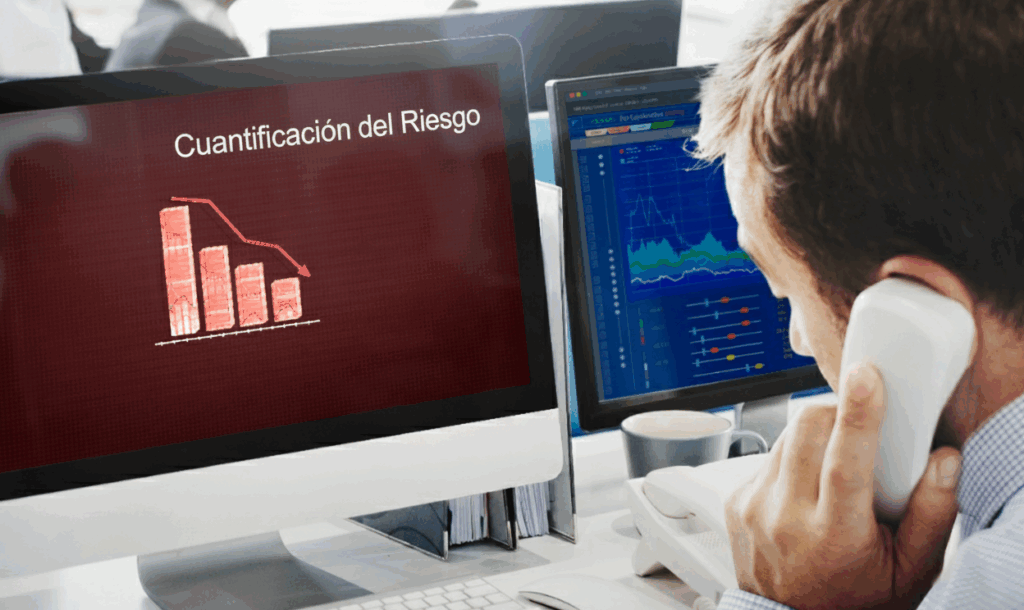The measurement of audience levels is a critical aspect in various sectors, especially in media, advertising and marketing. Knowing how many people consume a given piece of content, how they do it and what impact it has on their behavior is essential to optimize strategies and maximize return on investment (ROI).
In this article, we will explore how audience levels are measured according to different methodologies, tools and metrics used effectively.
Why it is important to measure audience levels

The measurement of audience levels not only helps companies understand their consumer base, but also influences key strategic decisions. Some of the benefits of measuring audience levels include:
- Content optimizationUnderstanding what content resonates with the audience allows creators and marketers to adjust their approach and deliver material that truly interests their audience.
- Effective segmentationMeasurement allows the identification of different audience segments, which facilitates the personalization of messages and campaigns to maximize relevance.
- Justification of advertising investmentsAudience data helps brands justify their advertising spending by showing how their investments impact consumer behavior.
- Strategy developmentWith accurate information on audience levels, companies can develop more effective and targeted strategies, both in terms of marketing and product development.

Optimize your audience measurement strategies with ENIGMIA
Are you ready to take your audience analysis to the next level? At ENIGMIA We offer advanced solutions based on artificial intelligence that allow you to measure and analyze audiences accurately and in real time. Take advantage of our technology to obtain valuable insights about the behavior of your viewers, listeners and readers.
Measuring audience levels is a critical component of any media's communication strategy. From television and radio to print and digital, understanding consumption patterns is critical for advertisers, content creators and distribution platforms. As technologies advance and consumption habits change, audience measurement methods have also transformed. This article breaks down audience measurement methods, their importance and the emerging trends that are shaping the practice.
Importance of audience measurement
Audience measurement is not just about numbers; it has profound implications for media, advertisers and consumers. Here are some key reasons why audience measurement is essential:
- Content optimizationBy understanding what type of content resonates most with the audience, creators can adjust their content strategies to maximize engagement. This may include changes to the length, format or subject matter of the content.
- Maximizing advertising revenuesAdvertisers are willing to pay more for advertising space on platforms that have a larger, more engaged audience. With accurate audience data, media outlets can offer more competitive rates and better target their ad campaigns.
- Improved marketing strategiesAudience data informs decisions about who to target and what messages to use. This helps brands communicate more effectively with their consumers and establish more meaningful connections.
- Effectiveness evaluationAudience metrics allow companies to evaluate the impact of advertising campaigns and content, which helps to adjust future strategies. This includes conversion rate and return on investment (ROI) analysis.
- Real-time strategy adjustmentWith the evolution of technology, especially in digital media, audience metrics can be updated in real time, allowing immediate adjustments to content and marketing strategies.
Television audience measurement
Television has traditionally been one of the most influential media, and its audience measurement is based on well-established methods.
Audimeters
The audimeters are electronic devices that record television viewing in selected households. These devices have been the industry standard for decades.
- OperationThe audimeter connects to the TV set and automatically tracks which channel and which programs are viewed. The data is periodically sent to research companies for analysis, providing information on the popularity of specific programs.
- RepresentativenessTo ensure that the data is representative, households are selected to reflect diverse demographics, including age, gender and socioeconomic status. This is crucial to provide an accurate picture of the total audience.
- Demographic DataAudimeters also provide information on the demographic profile of viewers. This allows advertisers to personalize their campaigns and content producers to adjust their approach according to the audience.
Survey methods
In addition to the audiometers, the surveys are another common method of measuring television viewership.
- LimitationsThe accuracy of the surveys depends on the respondents' memory and willingness to respond. This method may generate biases in the results, especially if a significant number of respondents are not available or choose not to participate.
- ComplementaritySurveys are most effective when combined with other methodologies, such as audiometers. This provides a more complete view of consumption and helps corroborate data.
Streaming analysis
The rise of streaming platforms has revolutionized audience measurement. Services such as Netflix, Hulu and Amazon Prime Video collect data directly on user behavior.
- Analytical dataThese platforms allow detailed analysis of viewing time, number of episodes watched and completion rates. This information is not only useful for the platforms, but also provides valuable insights for content creators.
- Content optimizationViewing data helps creators adjust and optimize future content, aligning it with audience interests. For example, if a comedy series has a high dropout rate, creators can reconsider the tone or format of its episodes.
- CustomizationMany streaming platforms use viewing data to provide personalized recommendations to users, thereby improving the customer experience and increasing dwell time on the platform.
Radio audience measurement
People meters
In radio, audience is measured using people metersdevices that record what is listened to in selected homes.
- StatisticsThese devices allow radio stations to know not only which programs are popular, but also the demographic profile of listeners. This is crucial for stations to tailor their programming and for advertisers to target their campaigns.
- Content StrategyWith this information, stations can adjust their content to better align with their audience's preferences, which may include changing program schedules or introducing new content.
Television and telephone surveys
The following are used telephone surveys to ask listeners about their listening habits.
- LimitationsAs in television, surveys can be subject to bias, depending on the memory and sincerity of the listeners. Participation in surveys can be low, which can affect the representativeness of the data.
- Complement to People MetersThese methods are most effective when used in conjunction with automatic measurement devices, providing a more complete picture of the audience.
Streaming and podcasting monitoring
The popularity of podcasts and streaming platforms has transformed audience measurement in radio.
- Detailed Insights: Music streaming platforms and podcasting services allow creators to understand which episodes are most popular and adjust their strategies accordingly. This includes episode length and frequency of publication.
- EngagementMetrics such as number of downloads, listening time and social media interaction provide a more complete picture of listener engagement with the content.
Press audience measurement
Readership census
In the print media, the audience is measured through readership surveyswhere readers are asked about their reading frequency.
- Ongoing researchThese censuses are crucial to understanding how readers interact with print content, and help publications adjust their editorial and advertising approach.
- Demographic dataAs in other media, publications can segment their data by age, gender and geographic location, allowing for a better content strategy.
Print runs and Distribution
Another way to measure the audience is to analyze the print runs and the distribution of newspapers and magazines.
- Marketing strategyReadership estimates: Publications use readership per copy estimates to design more effective marketing strategies. This includes determining where to distribute copies and in which outlets.
- Sales analysisThe correlation between sales and audience numbers allows publishers to assess the impact of their marketing strategies and adjust as necessary.
Online audience measurement
Web traffic analysis
Digital audience measurement is done primarily through the web traffic analysis. Tools such as Google Analytics allow website administrators to track visits, page views and bounce rates.
- Key metricsThese metrics help to understand what content is most popular and how users interact with the site. For example, a high bounce rate may indicate that users are not finding what they are looking for on a specific page.
- SegmentationData can be segmented by different criteria, providing a more complete view of the audience. This includes segmentation by geolocation, device and time of visit.
Social networks
Social media platforms offer analytics tools that allow users to measure the performance of their content.
- Social metricsSocial media data: They include interactions (likes, shares, comments), follower growth and reach of posts. This data is crucial to evaluate the effectiveness of social media marketing campaigns.
- EngagementEngagement rate is a key indicator of social media success. High engagement indicates that the content is resonating with the audience and generating meaningful interactions.
Cookies and tracking
The use of cookies and tracking technology allows websites to collect information about user behavior online.
- CustomizationThis information is used to personalize the user experience and optimize content. Sites may offer recommendations based on the user's browsing history.
- RetargetingCookies also enable retargeting strategies, where ads are shown to users who have previously interacted with a site's content.
New trends in audience measurement
Multichannel Measurement
With the convergence of media, audience measurement is moving towards a more multichannel. This means that more attention is being paid to how consumers interact with different platforms and devices.
- Cross-Media measurement: Tools that enable audience measurement across different platforms help to understand consumer behavior in an increasingly complex media ecosystem.
- Mobile consumptionThe rise of content consumption on mobile devices is changing how audiences are measured. It is essential to track not only web usage on computers, but also on smartphones and tablets.
Artificial Intelligence and Machine Learning
The technologies of artificial intelligence (IA) and automatic learning are emerging as powerful tools in audience measurement.
- Predictive analyticsThese technologies can analyze large volumes of data to identify patterns and predict future behavior. This allows content creators to anticipate what type of content will be popular.
- Automatic optimizationAI can also automatically optimize content and marketing strategies based on real-time data, enabling faster and more accurate adjustments.
Privacy and regulations
Audience measurement is also facing new challenges related to the privacy and regulations, especially with legislations such as the RGPD in Europe.
- User ConsentCompanies must obtain user consent to collect and analyze data. This is leading to a shift towards more transparent and user-centric measurement methods.
- Challenges for Companies: Regulations also present challenges for companies that rely on third-party data, which can affect their ability to effectively measure and analyze audiences.
Conclusions
Measuring audience levels is a multifaceted process that is constantly evolving with technology and consumer habits. From television to digital, each platform has its own methodologies and tools to measure how consumers interact with content. As technologies advance, especially with the incorporation of artificial intelligence, the possibilities for analysis and optimization become more sophisticated and accurate. Understanding these methods is crucial for any organization looking to maximize its impact and effectiveness in an ever-changing media landscape.
The importance of this data cannot be underestimated; it informs strategic decisions, optimizes content and allows brands to connect more effectively with their audience. In an environment where competition is fierce, having a clear understanding of audience levels can be the key to success.
Key Performance Indicators (KPI)
The audience measurement is based on several metrics or key performance indicators (KPIs) that enable marketers and content creators to better understand how their content is consumed and how audiences interact with it.
The following is a description of some of the most important metrics for audience measurement in television, radio, print and digital media.
1. Television Metrics
- RatingThe proportion of households that are watching a particular program in relation to the total number of households that have television. This metric is expressed as a percentage and is fundamental to understanding the popularity of a program.
- ShareIt refers to the percentage of households that are watching a program in relation to the total number of households that are watching television at that moment. Share is useful to evaluate competition between programs in the same time slot.
- Display timeThis metric indicates the average duration viewers spend watching a program. A high viewing time can signal that the content is engaging and holds the audience's interest.
- Audience demographicsDemographics, such as age, gender and location of viewers, are crucial for advertisers. These metrics make it possible to segment audiences and customize ads according to the interests of the target audience.
2. Radio Metrics
- Listening rateThis metric indicates the percentage of the population that listens to a radio station during a given period. Like television ratings, it is fundamental to understand the popularity of the station.
- Listening timeMeasures how much time the audience spends listening to a radio station. A long listening time may indicate that the programming is attractive to listeners.
- Total audienceReflects the total number of listeners listening to a radio station during a specific period, whether daily, weekly or monthly. This metric helps to evaluate the station's reach.
- Demographic segmentationSimilar to television, demographic metrics in radio are crucial to understanding who is being reached. Data on age, gender and location allow radio stations to adjust their programming and advertising.
Press metrics
- CirculationCirculation refers to the number of copies distributed of a newspaper or magazine, whether in print or digital format. This number is a key indicator of potential audience.
- Readership per copyThis metric estimates how many people read a single copy of a publication, which helps to understand the real impact of each edition.
- Reading timeMeasures how much time readers spend interacting with the content, which is essential for assessing engagement with the published material.
- Readership surveysMany publications use surveys to obtain direct information from their readers about their reading preferences and habits. This may include how often they read the publication and what type of content they prefer.
4. Metrics in digital media
- Visits and Page ViewsIn the digital world, the number of visits (unique visitors) and page views is fundamental. Visits represent the number of unique users accessing the site, while page views indicate the total number of times the site's pages have been viewed.
- Rebound rateBounce rate: This metric indicates the percentage of visitors who leave the site after viewing only one page. A high bounce rate may indicate that the content is not attractive or that visitors are not finding what they are looking for.
- Session DurationMeasures how much time a user spends on the website during a single visit. A long session time is usually an indicator of relevant and engaging content.
- Social Networking InteractionsInteraction metrics on social platforms (likes, shares, comments) are essential to evaluate the engagement of digital content. These interactions indicate not only how many people see the content, but also how many are willing to participate with it.
- ConversionIn the digital context, conversion metrics measure how many visitors perform a desired action, such as subscribing to a newsletter, completing a purchase or signing up for a service. This is crucial for evaluating the effectiveness of marketing strategies.
Audience level measurement tool

ENIGMIA is positioned as one of the main tools for audience measurementthanks to its focus on artificial intelligence and real-time data analysis. This platform enables television networks, radio stations and digital media to obtain detailed insights into the behavior of their audiences. With its ability to process large volumes of data and generate predictive analytics, ENIGMIA helps optimize programming and content, maximizing engagement and audience retention.
This tool offers an intuitive interface that facilitates data visualization, allowing users to quickly identify audience trends and make strategic adjustments. In addition, its ability to integrate data from multiple sources ensures that analyses are complete and accurate, giving media outlets a competitive advantage in the marketplace.




